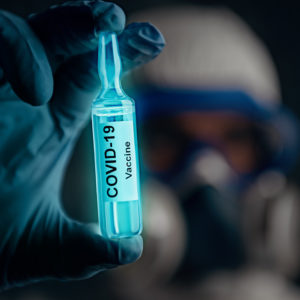Earlier this month, President Trump issued an executive order designed to reduce spending on brand-name drugs.
The order, which effectively pegs Medicare reimbursements for advanced medicines to the lowest prices paid abroad, reveals an irreconcilable tension at the heart of the outgoing administration’s drug policies.
In the midst of a global health pandemic, the White House wants to champion American innovation. Public-private partnerships like “Operation Warp Speed” have expedited the development of private COVID-19 therapeutics by clearing away excessive regulatory hurdles and promising huge purchases of new products.
And yet, this new order is guaranteed to deter investment in risky biotechs and hobble the nation’s drug industry for decades to come.
The White House can’t have it both ways.
The appeal of President Trump’s order, which is limited to the advanced medicines administered in physicians’ offices, is obvious. It’s unfair that foreign governments pay less for medicines than Medicare does.
It’s especially unfair once one considers that most medicines are invented in the United States. Tying Medicare’s payments to the lowest price abroad could generate some savings for American taxpayers.
But at what cost?
Those “most favored” countries spend less on medicines primarily because they impose strict price controls. Foreign governments simply demand unreasonably low prices. If and when companies balk, those governments refuse to purchase the drugs, depriving their citizens of access.
This deprives patients around the world of breakthrough science available today. And it leaves Americans alone in funding the bulk of global drug development.
Developing a new medicine is tremendously expensive. Writing in JAMA, Olivier Wouters — a health policy professor at the London School of Economics — put the cost of developing one new drug at $985 million. Others, like Joseph DiMasi at Tufts University, put the cost much higher, at closer to $3 billion.
The cost is so high because most research lines flame out.
Research scientists operate at the edge of human understanding. They spend their days exploring novel compounds and therapeutic technologies. The likelihood of failure is extremely high.
Indeed, DiMasi has found that just 12 in 100 candidates that shows promise in the lab actually becomes a medicine. Those rare successes must pay for all the failures along the way.
Government support can speed up drug development, as it has with the development of COVID-19 vaccines, but only to a point. Scientists were ready to act — and ready to explore new therapeutic technologies, like messenger RNA — because private capital has financed so many high-risk endeavors.
The story of messenger RNA begins in the 1990s.
Back then, two scientists at the University of Pennsylvania —- Katalin Kariko and Drew Weissman — began exploring mRNA, a naturally occurring molecule in the human body, as a gene therapy. Since mRNA directs cells to produce proteins, these researchers theorized that synthetic mRNA could direct the production of specific proteins needed to fight specific diseases.
Turning synthetic RNA into something that could be administered to patients, though, turned out to be quite challenging. Scientists had to build RNA molecules that could successfully infiltrate and control human cells without triggering the body’s immune response to foreign agents.
The mRNA vaccines from Moderna and Pfizer are the first successful application of this cutting-edge technology.
Pfizer is a 171-year-old global pharmaceutical powerhouse, but Moderna is a relatively young start-up — financed almost entirely by private capitals. Moderna’s founders started the company with $40 million in outside investment and then raised another $1 billion over the following five years.
Scientific innovation like this attracts capital from investors because the rewards — rare as they are — can be enormous. That chance underpins biomedical innovation across the globe. American scientists invent two in three new medicines.
The remaining third might originate in overseas labs — but they depend on American sales. It isn’t fair, but the rest of the world coasts off both American ingenuity and the American economy.
Addressing this inequity is a worthy goal. But that’s a task best rectified by America’s trade negotiators.
Any effort to index American drug prices to the artificially low prices paid abroad guarantees that big, bold bets will dry up. Indeed, the Congressional Budget Office has calculated that foreign reference pricing would result in up to fifteen fewer new medicines over the next decade.
President’s Trump’s own advisers calculated that foreign reference pricing would result in up to 100 fewer new medicines over the next decade.
What if one of those new medicines is a cure for ALS, multiple sclerosis, or Alzheimer’s? Or yet another remarkable advance in the fight against cancer?
Earlier this year, the American Cancer Society reported that 2017 marked largest-ever one-year decline in the U.S. cancer death rate. The credit went almost entirely to new medicines.
The White House can’t claim to be a champion of American ingenuity while proposing to gut the system that got us there.
In January, Joe Biden will have the chance to reverse this dissonant policy. For science, it’s critical for him to scrap it.

